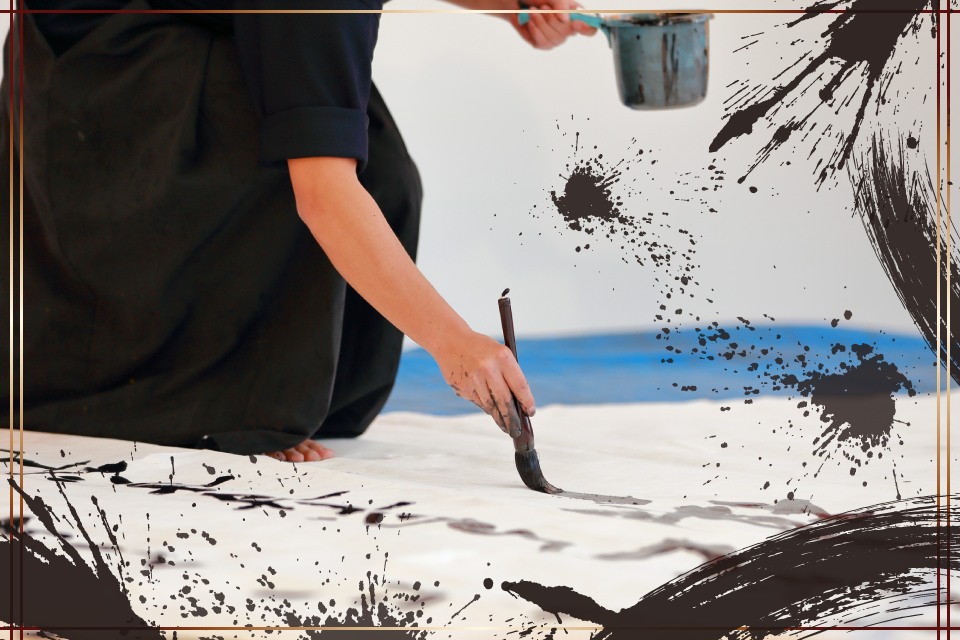

I want to convey the appeal of calligraphy!
Are you looking for a Japanese cultural experience that is easy to prepare and can be enjoyed by all?
If so, we have just the thing for you. Calligraphy is a good choice.
Anyone can enjoy calligraphy, regardless of age, as long as they have a brush, ink, and paper.
Calligraphy is familiar to Japanese people, but it is surprisingly difficult to explain its charm and history to foreigners.
Therefore, in this article,
How to convey the appeal and history of calligraphy in English
・Ideas for planning a calligraphy experience
・Basic flow of a calligraphy experience
to the following.
If you are looking for a casual Japanese cultural experience or want to convey the appeal of Japanese calligraphy to people outside of Japan, please read to the end.
Why Calligraphy is Popular among Foreigners
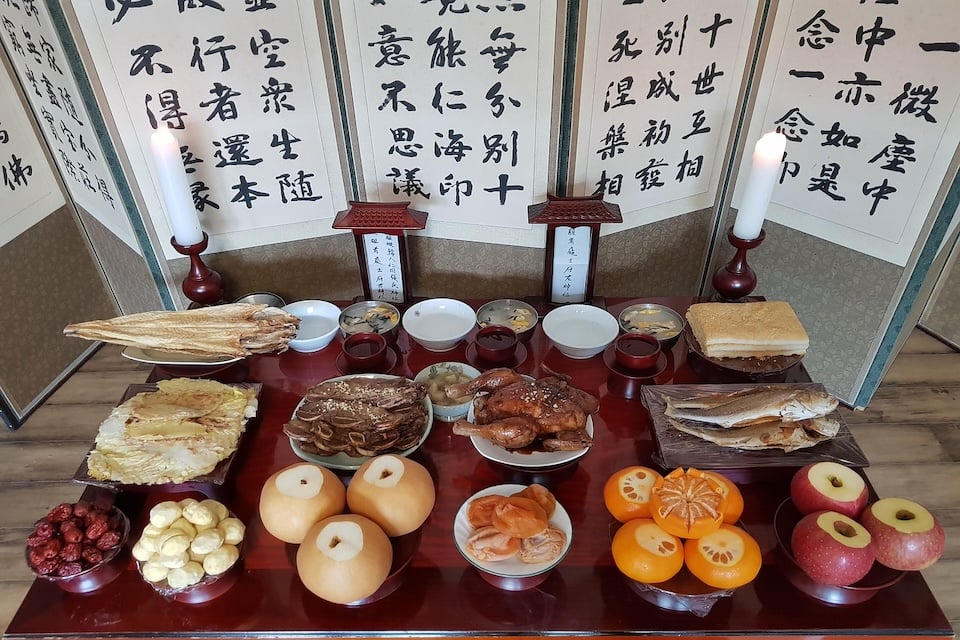
In fact, calligraphy is a popular activity among foreigners.
In this issue, we asked Ms. D, who actually experienced calligraphy at a Japanese festival in Brisbane, Australia, about the appeal of this activity.

Hi, my name is D.
I have worked in Japan when I was in my 20s and have loved Japan since then.
I participated in a calligraphy experience in Australia.
I would like to talk about why the calligraphy experience appealed to me.
Attraction of Calligraphy
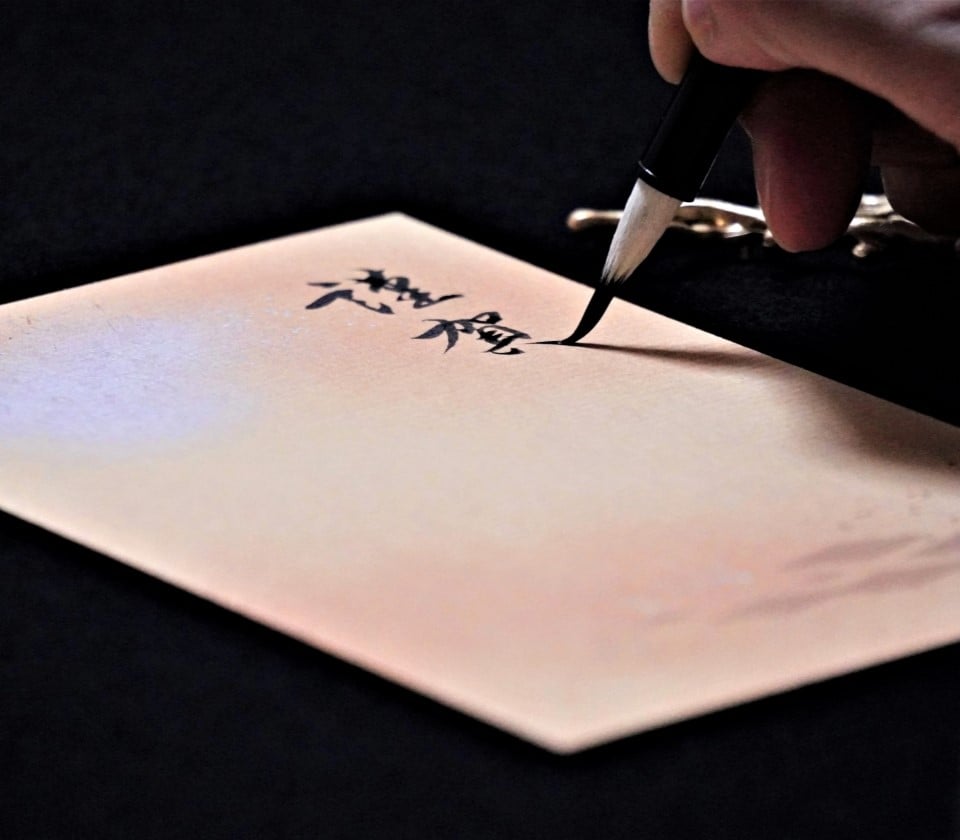
What do foreigners who have actually participated in a calligraphy experience find attractive about calligraphy?
In this issue, we asked Ms. D, who participated in a calligraphy experience in Australia, about three things that attract her to calligraphy.
Anyone can participate.
Mr. D said that the calligraphy is “Anyone can participate easily. D says that she is attracted to calligraphy because “anyone can join in easily.
He thinks it is an experience that can be recommended to many people because it requires little preparation and the ease of sitting down to write letters.

I like the ease of just sitting down and writing letters.
Souvenirs.
It can be a memento. Another point that Mr. D found attractive was the fact that he could take his work home with him.
In calligraphy, you can take home a piece of work you have written.
She said that having her experience remain as a form of remembrance was a special memory for her.

I put my written calligraphic works on the walls of my home.
It was a good keepsake.
A uniquely Japanese experience.
Mr. D had never experienced “writing with a brush” before his calligraphy experience.
They said they enjoyed this unique Japanese experience, which is not something they usually get to do.

It was fun to actually experience calligraphy, which I had seen in cartoons.
I felt that calligraphy was a uniquely Japanese experience.
Foreigners seem to find calligraphy appealing because it is such a “casual, uniquely Japanese experience.
Ms. D says she also likes these other aspects of calligraphy.
Spirituality” and “sense of beauty” that resonate with foreigners
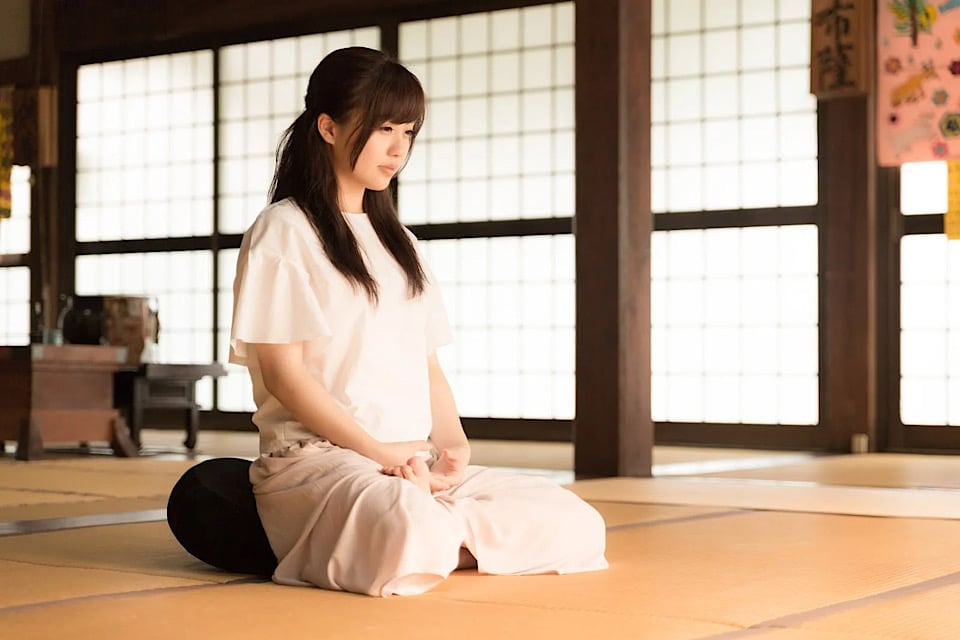
Mr. D is also attracted to the “spirituality” and “sense of beauty” of calligraphy.
She finds the quiet space to calm her mind, concentrate, and write beautiful letters.
It is not only the act of writing letters, the act of writing, but also the ability to learn to regulate one’s mind. and learning how to regulate the mind.

During the calligraphy experience, the teacher taught us about the spirituality of calligraphy.
Learning to prepare my mind, which the teacher taught me , is still useful to this day.
When I actually talked to them, I found that people from overseas are attracted to calligraphy not only because of its ease of use, but also because of its spirituality.
It makes me very happy to think that people overseas are finding Japanese culture attractive.
It makes me very happy when people from overseas like calligraphy in this way.
But if you don’ t know how to convey the appeal of calligraphy in English, don’t worry.
Here is a message from Ms. D, who lives in Australia, Let’s learn how to convey the charm of shodo in English from Ms. D who lives in Australia.
Charm of Calligraphy to be conveyed in English
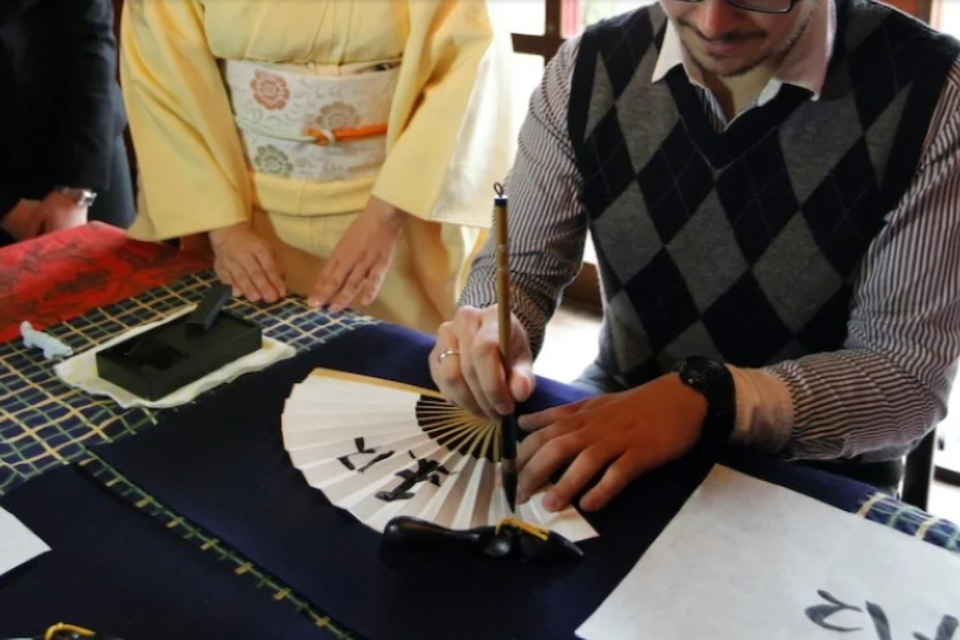
How can we convey the appeal of calligraphy in English?
To Mr. D, who lives in Australia, We asked Ms. D, who lives in Australia, to tell us five phrases that are useful when introducing to tell us how to introduce calligraphy in English.
Five English phrases that convey the appeal of calligraphy
- It’s an activity that’s easy for anyone to join.
-
誰でも気軽に参加できるアクティビティです。

The first thing I want to convey is this phrase!
After all, people are nervous about experiencing a foreign culture, so telling them that it is “easy to participate”
and “anyone can do it” may put them at ease. - We write characters using this ink and brush.
-
このインクと筆を使って文字を書きます。

Brushes and sumi ink are very Japanese and very attractive.
However, it is sometimes difficult to know how to use them at first. It may be better if you can actually use them and show them to us so that we can easily understand. - Writing characters with focus helps calm the mind.
-
Concentrating on writing calms the mind.

I am very excited to learn about Japanese spirituality!
It is a learning experience when you can teach us the spirituality of calligraphy, such as “concentrate” and “calm your mind,” even if it is in simple terms. - It’s more important to express your heart than to write perfectly.
-
集中して文字を書くことで心を落ち着けます。

I was a little sad because I could not write Kanji characters well.
However, my calligraphy teacher told me that calligraphy is not a study but an art that expresses the heart.
Knowing that calligraphy expresses the heart, I became even more attracted to it. - Please take this home as a souvenir.
-
上手に書くよりもあなたの心を表すのが大切なんです。

The charm of calligraphy is that memories remain in the form of works of art.
Many people may be pleased to hear that they can take home a work of art as a keepsake.
These five phrases should be enough to convey the appeal of calligraphy.

Mr. D, thank you for sharing your fascination with calligraphy and useful English phrases!

It was a pleasure to talk about the charm of calligraphy with you too!
By the way, as we talked about calligraphy, I wondered something.
Since when did people in Japan stop writing letters with ink or brushes?
And where did the culture of writing letters with a brush originate?

……
Thus, when a foreigner If you are asked about the history of calligraphy by a foreigner, it would be sad if you could not answer It would be sad if you could not answer the question.
Since we are here, let’s learn more about the history of calligraphy.
History of Calligraphy
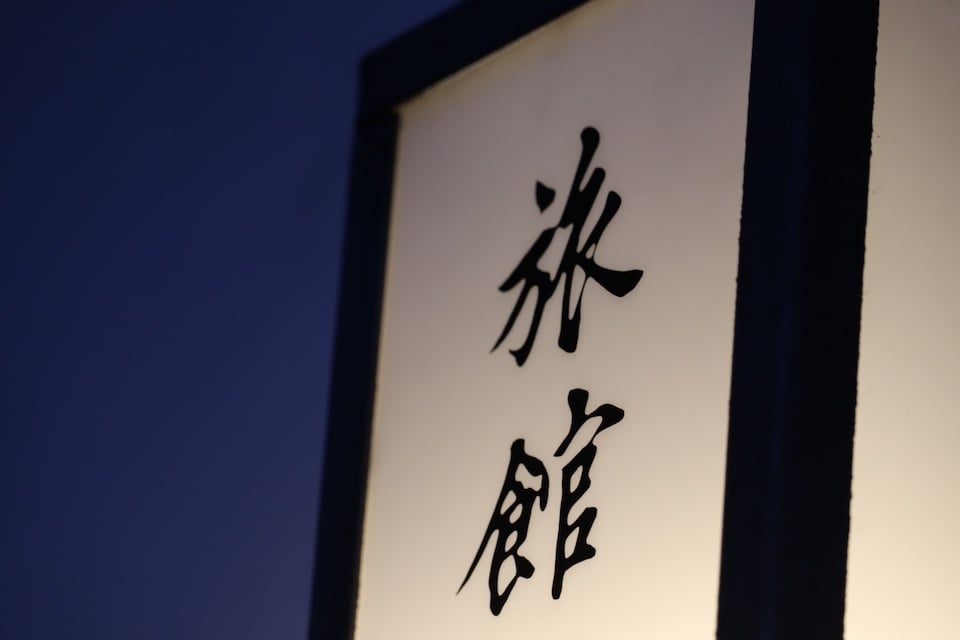
When did calligraphy begin and how did it spread among the common people?
To be able to answer questions about calligraphy when asked by people from other countries, Let’s learn about the history of calligraphy to be able to answer questions about calligraphy when asked by foreigners.
| History of Calligraphy | |
| Asuka and Nara Period (6th – 8th century) | Chinese characters were introduced from China. The culture of writing characters using ink and brush to write government records and temple scriptures began. At this time, the importance of writing well-formed, legible characters was emphasized. |
| Heian period (8th – 12th century) | By this time, hiragana and katakana had been introduced and more diverse language expressions could be enjoyed. The style of writing became more graceful and the emphasis was on beautiful, flowing strokes. |
| Edo period (17th-19th century) | Terakoya spread and common people were able to learn to write. Practical books for daily life, letters, and business records also became widespread, and more emphasis was placed on easy-to-use and legible script. |
| Meiji, Taisho and Showa Eras (19th to early 20th century) | With the spread of pens and pencils, which are easier to use than brushes and sumi ink, the number of people writing with brushes has dwindled. However, calligraphy became an established part of Japanese culture and education. |
| present | Calligraphy has become popular abroad as a part of Japanese culture. Today, more and more people enjoy calligraphy as an art form. |
Calligraphy was initially used in government offices and temples, but gradually spread to the common people. As time went by, fewer and fewer people used the brush, but it has been handed down to the present as a culture and art. ……The history of calligraphy is truly profound.
I think you will enjoy calligraphy more if you do it with this history in mind.
History of Calligraphy Communicated in English
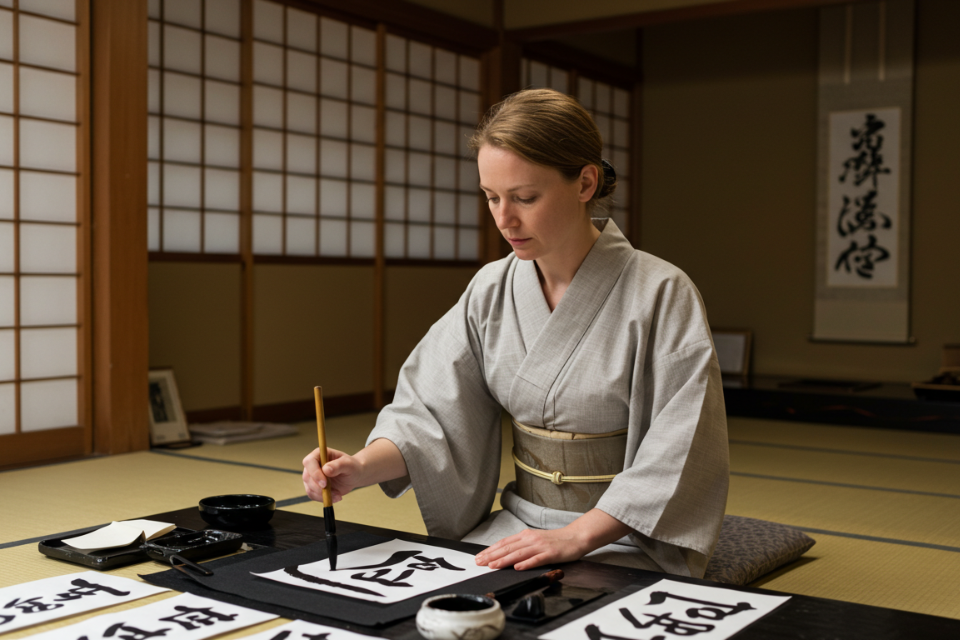
In the previous section, we learned about the history of calligraphy.
But it is hard to convey all this history in English, isn’t it?
So, in this article, we will give Mr. D some pointers. I asked Mr. D to teach me three English phrases to introduce the history of calligraphy. I asked Mr. D to teach me three phrases to introduce the history of calligraphy.
Three English phrases that convey the history of calligraphy
- At first, people wrote using Chinese characters, but from the Heian period, Japan developed its own scripts, including hiragana and katakana.
-
最初は漢字を使っていたのですが平安時代からひらがな、カタカナといった独自の文字を使うようになっていきました。

I have wondered why Japanese and Chinese kanji are different.
This explanation will answer that question! - About 150 years ago, people started using pens and pencils.
-
150年前くらいから人々はペンや鉛筆を使うようになりました。

It is interesting to see how the brush has fallen out of use over the course of history.
If you have room
What did people in your country use to write in the past?
(What did people in your country use to write in the past?
The conversation will surely be lively. - Today, children learn calligraphy at school.
-
現在、子供たちは学校で書道を学んでいます。

It is interesting to learn about calligraphy in school.
I think it is very important to learn about culture at school.
If you have room
Do children in your country also learn about traditional culture at school?
(Do children in your country also learn about traditional culture at school?)
(Do children in your country also learn about traditional culture at school?)
It would be a good opportunity for them to learn about a new culture.
Now you can explain not only the fascination of calligraphy, but also its history in English.
I can confidently guide foreigners to experience calligraphy.
If you would like to learn more about the history of calligraphy and confidently explain it to foreigners, please also refer to the following articles.

For those who think, “But I don’t know what kind of event to plan,” or “It might be a little boring if it’s just a calligraphy experience,” here are three ideas for you to consider, Here are three ideas for a calligraphy experience. I would like to introduce three ideas for a calligraphy experience.
Calligraphy Experience Project Pleased by Foreign VIPs
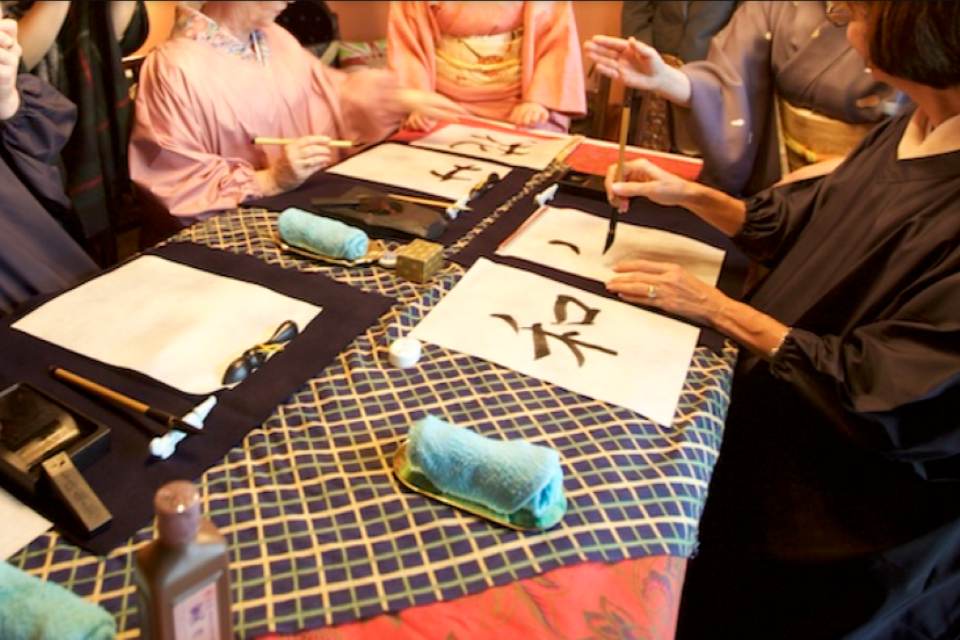
Here, 3 recommended calligraphy experience plans for foreign VIPs. We have prepared not only a mere calligraphy experience, but also a program that can lead to improved performance and teambuilding.
Not just a simple calligraphy experience, but also a performance-enhancing and team-building experience.
Please take a look.
Calligraphy x Performance
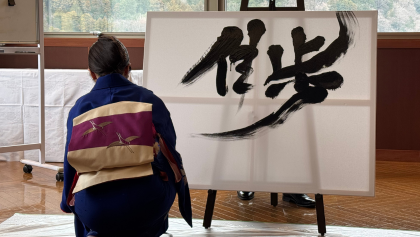
Calligraphy is a highly expressive and performative aspect of Japanese culture.
If you are going to go through the trouble of experiencing it, why not watch a performance by a professional calligrapher in addition to actually picking up a brush?
Drawing with the whole body The powerful world of calligraphy, which is created using the whole body, will surely satisfy foreign VIPs. VIPs from abroad will surely be satisfied with the powerful world of calligraphy.
Calligraphy x Team Building
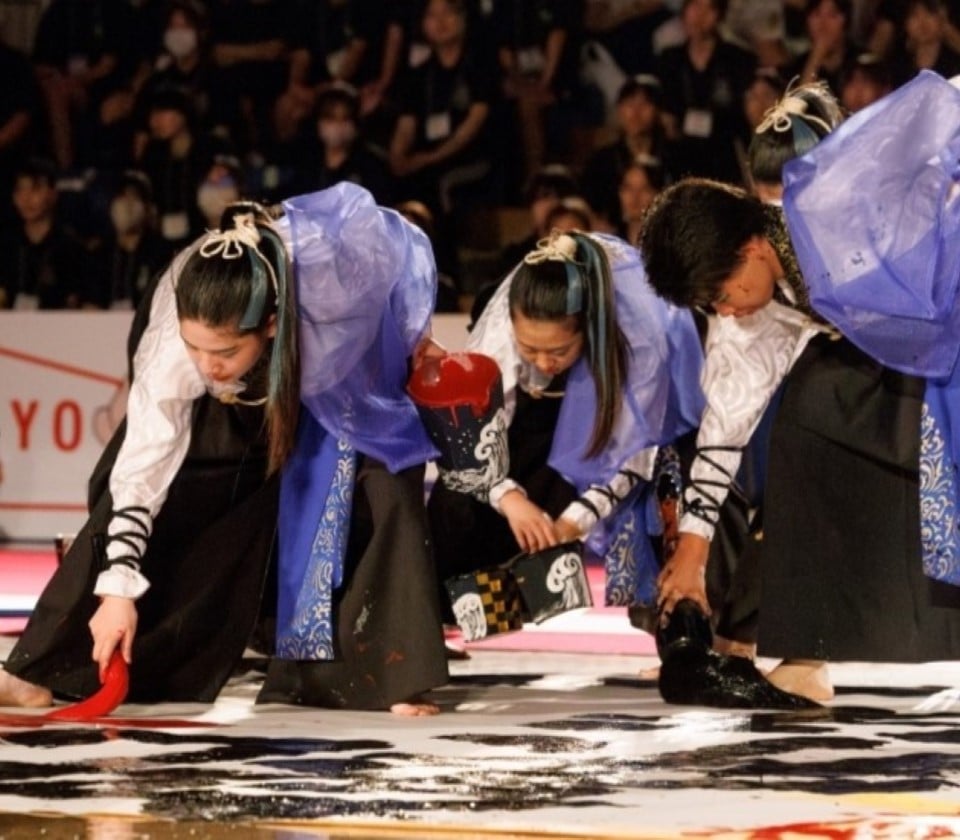
For those who are considering planning for business occasions such as business entertainment, we recommend team building events that incorporate calligraphy.
Calligraphy relays” in which participants finish a kanji character one stroke at a time, “resolutions” in which everyone writes their team’s thoughts and feelings, and so on, Group events using calligraphy can be a great way to strengthen team bonds. This is a great way to strengthen team bonding.
It is also a great way to bring foreign VIPs and Japanese members closer together.
Calligraphy x Souvenirs
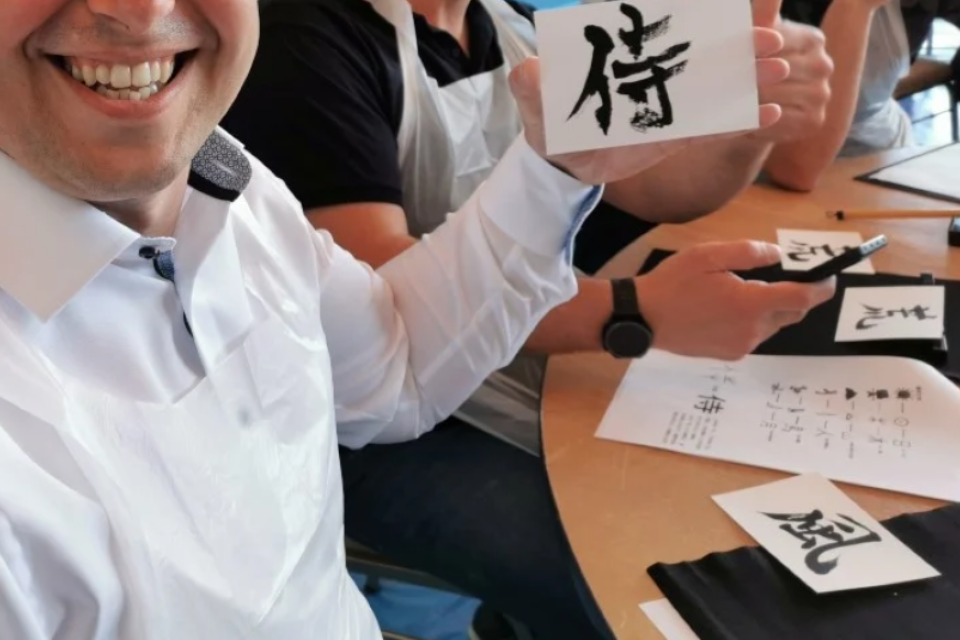
The great appeal of calligraphy is that what you write with a brush becomes a work of art.
Since it is a unique experience, you can make a beautiful piece of colored paper, frame it, and display it as a unique piece of artwork as a wonderful souvenir.
You can also make a practical and memorable souvenir by imprinting letters on an everyday item such as a mug or a folding fan.
The one-of-a-kind work of art created by your own hands will surely be a satisfying experience for foreign VIPs. VIPs from abroad will be very satisfied with their one-of-a-kind handmade souvenir.
Depending on your ideas, calligraphy can be used in various situations such as entertainment and training.
If you would like to incorporate this into an actual event, please contact us.
For more specific calligraphy experience ideas, please refer to this article.

Calligraphy Experience Flow
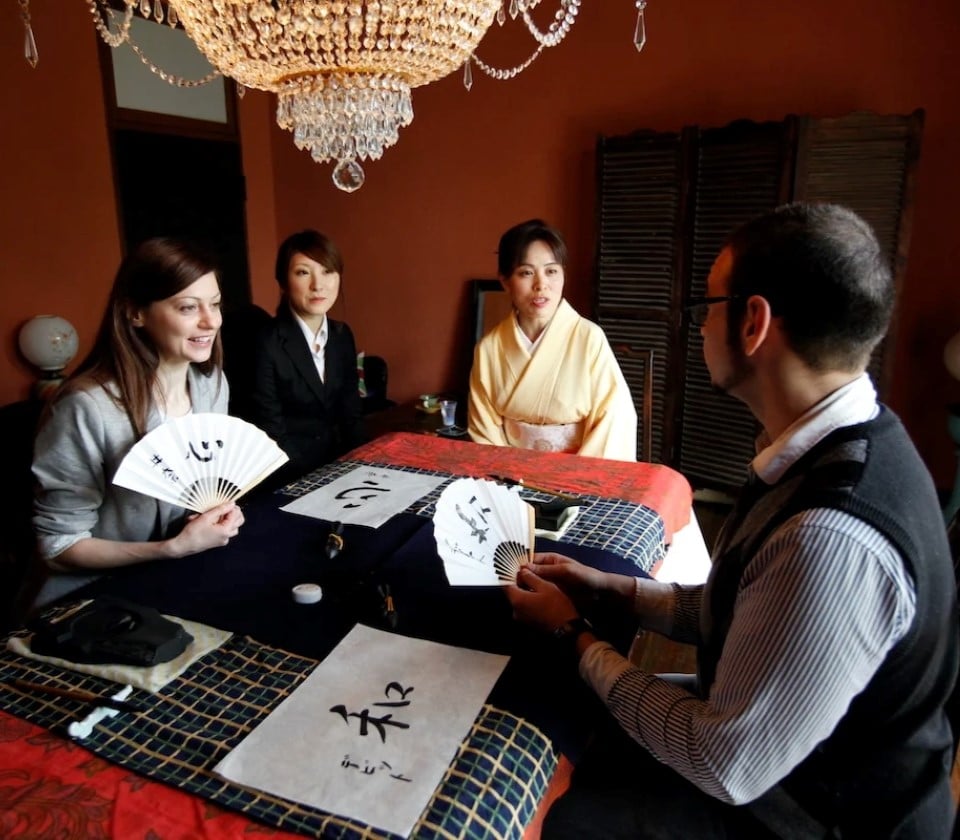
For those who are interested in the calligraphy experience but do not know what to expect, or want to know in advance what to expect on the day of the experience, here is a guide to the overall flow of the experience, what to expect, and how to explain it in English. Here we will introduce the overall flow of the calligraphy experience, points to note, and how to explain them in English. and how to explain them in English.
Calligraphy Experience Flow
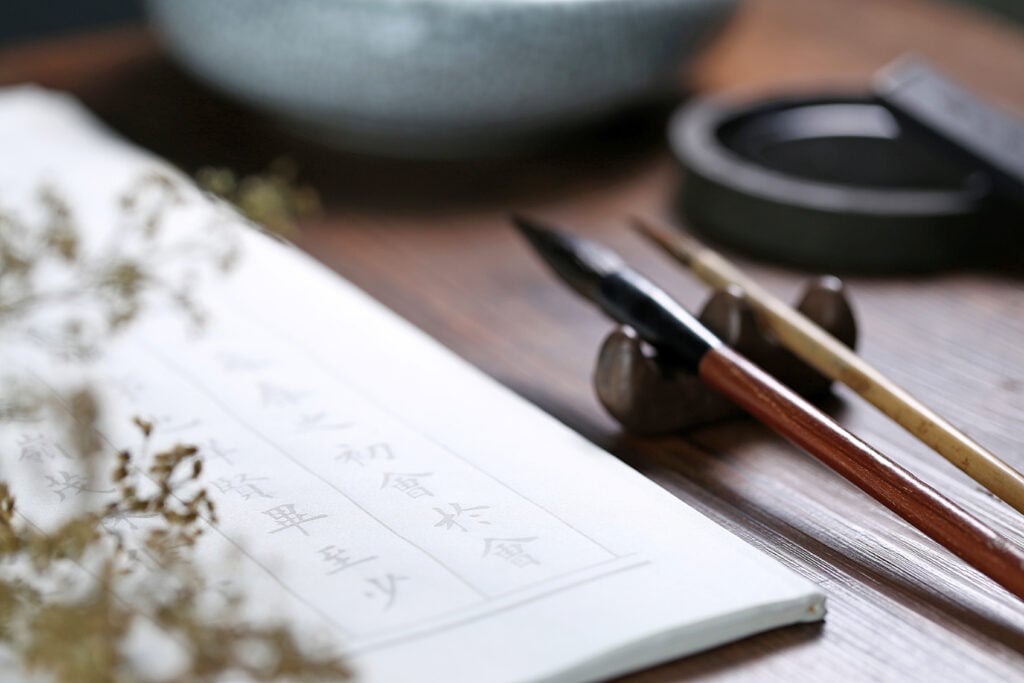
The calligraphy experience mainly consists of the following steps
In most calligraphy experiences, tools such as brushes, ink, and paper are provided in advance, so participants do not need to bring anything.
Participants are asked to take a seat and are given instructions on how to use the tools.
Next, ask participants to think of words they would like to write.
If there is a word you want to write in your example, show it to them.
If it is not in the model, you can make it easier to write by displaying the kanji in large font on your iPad or smartphone.
It is nerve-wracking to suddenly write letters on colored paper.
Participants may feel more comfortable if they are asked to practice two or three times on a half sheet of paper at first, and then tackle the real thing.
Finally, it is time to write the characters.
When writing characters, not only on colored paper, but also on a fan, a teacup, a board, etc., be flexible to meet the needs of the participants to make the calligraphy experience more enjoyable.
If you are making souvenirs, you may enjoy adding embellishments to the colored paper you wrote on.
If conducted as an in-house event, it is also a fulfilling calligraphy experience if there is time for reflection and presentation of findings.
This is the flow of the calligraphy experience.
Calligraphy experience flow to be communicated in English

In the previous section, we studied the process of the calligraphy experience.
However, it is difficult to explain everything in English, isn’t it?
So, to Mr. D, who just told us about the charm of shodo, 5 English phrases that can be used during a shodo experience. I asked Mr. D, who just told us about the charms of shodo, to teach us five phrases that can be used during the shodo experience.
5 English Phrases for Calligraphy Events
- Please have a seat.
-
こちらにお座りください。

In English-speaking countries, if you do not say Please, you may be misunderstood as a rude person.
Whenever you want to ask someone for something, please always add “please”. - Let me explain how to use them.
-
使い方を説明します

This is a universal phrase!
You don’t have to memorize lengthy English, just use this phrase and actually show them how to do it. - What word would you like to try writing?
-
どんな文字を書いてみたいですか?

This What word would you like to- (What do you want to do?) is another versatile phrase. It is very useful when you want to ask someone what they want.
- This word is written like this in kanji.
-
この言葉は漢字ではこのように書きます。

Simply saying this phrase when setting an example will give a more polite impression.
- I love it! It looks amazing!
-
すごく良いですね。最高です。

After all, I find it more enjoyable when I am with people who praise my work and enjoy the experience with me.
Please compliment each other’s work and let’s get to know each other better.
If you remember these five phrases, your calligraphy event will go smoothly.
Mr. D, who taught us the charms of calligraphy and phrases that we can use, actually had some trouble while conducting the calligraphy experience.
In order to make the calligraphy event more satisfying, To ensure a more satisfying calligraphy event, let’s also learn a few points to keep in mind during the calligraphy experience. to make your calligraphy event more satisfying.
Problems foreigners had with the calligraphy experience
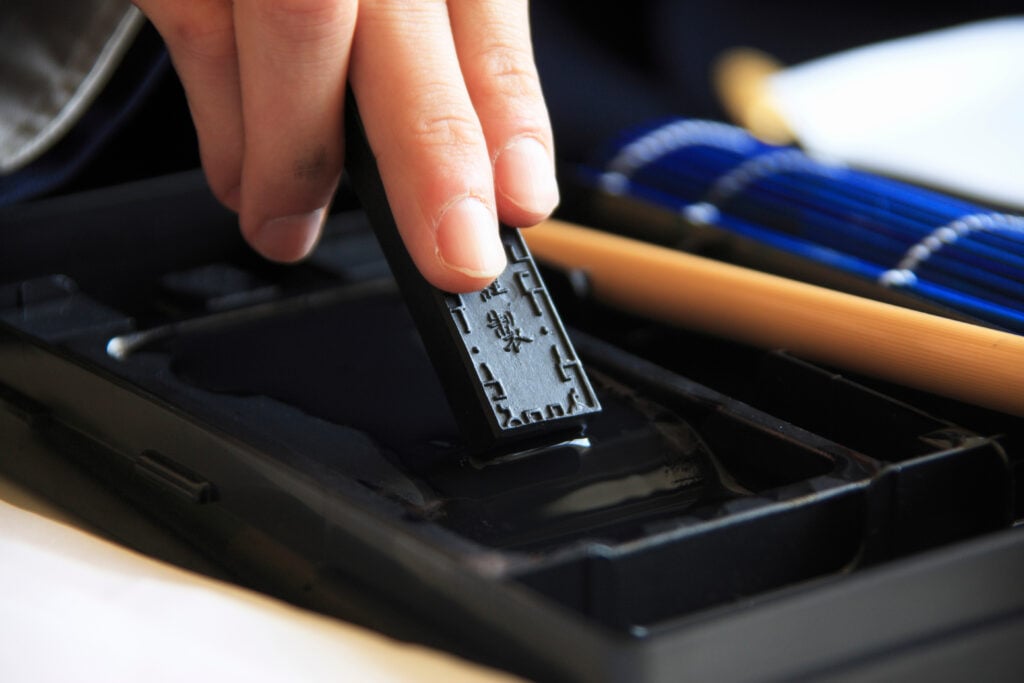
Overall, Mr. D enjoyed his calligraphy experience very much, but he had some difficulties during the experience in the following areas.
Attention to dress
One of the problems Mr. D had during his calligraphy experience was getting his clothes dirty.
The ink from calligraphy tends to splatter and is difficult to remove. It was kind to tell the participants in advance to wear black clothes.
It would be helpful to tell participants in advance to wear black clothes. It is also a good idea to have an apron or something similar ready for those who accidentally wear white.

I was wearing a green hoodie, and I got ink stains on it, which were very difficult to remove because the stains were so noticeable.
Notes on Calligraphy Experience to be communicated in English

How should these cautions be communicated in English?
To Mr. D Two English phrases that can be used to convey the cautions of a calligraphy experience I asked her to tell me.
Two English phrases that can be used to convey the importance of the calligraphy experience.
- The ink could get on your clothes, so please wear something dark.
-
インクで服が汚れるかもしれないので黒い服を着てください。

It would be easier to understand if you could even present specific colors.
- Would you like to use this apron?
-
エプロンを使いますか?

If you have an apron to prevent stains, this phrase can be used.
As long as you follow these precautions, you can enjoy your calligraphy experience with peace of mind.
Please enjoy the calligraphy experience to the fullest while taking care not to get your clothes dirty!

Thank you very much for all the information, Mr. D!
If you want to create a safe and enjoyable calligraphy project.

In this issue, we learned about the appeal and history of calligraphy, event ideas, and much more.
I hope this article will make you think, “Calligraphy experience sounds fun! I would be happy if you think, “I would like to try it.
However, some of you may feel that “I wonder if I can organize a calligraphy experience by myself” or “It seems difficult to manage.
In such cases, one way is to take advantage of support from Motenas Japan. We can help you plan a Japanese cultural experience tailored to the number of people and their preferences.
We would be happy to help you come up with a great experience together.

After graduating from Kansai University, I joined JTB as a new graduate and worked in the inbound tourism sector.
After getting married, I moved to Australia due to my husband’s work and obtained a diploma in early childhood education there.
I am currently working at a kindergarten while also working as a writer.





